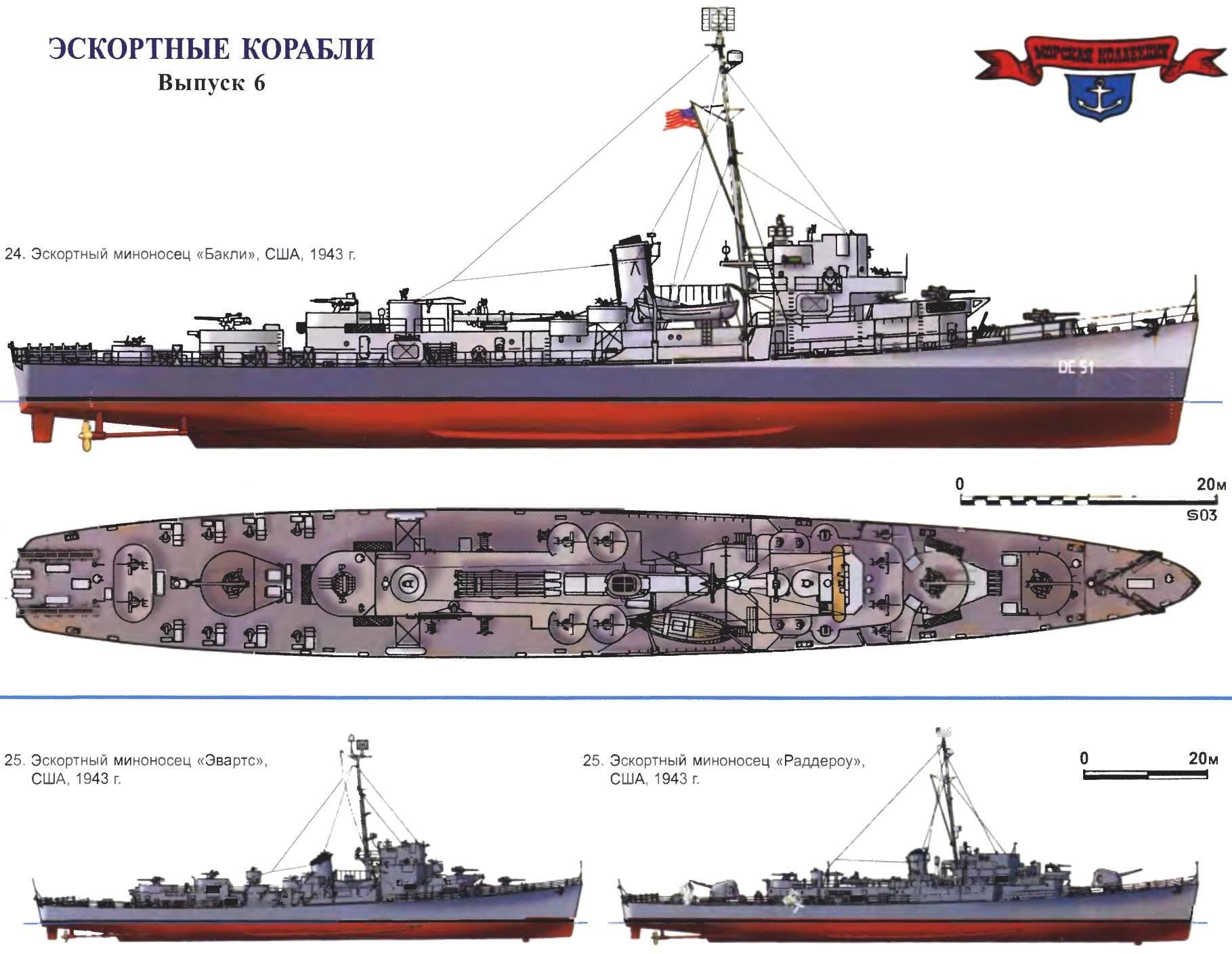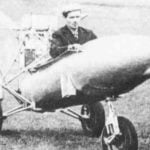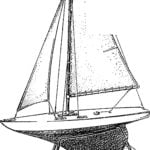 Far from the flares in Europe, the war, even the Americans in 1940 still did not think about creating your own escort destroyers. They continued to build its “big fleet”, which included a huge number of destroyers: believed that these versatile ships will be able to solve all the problems. As for specialized anti-submarine defense forces, have refused them for financial reasons: inexperienced designers managed to create a kind of “miracle of technology”, which had a displacement of just 775 tonnes, but that cost almost as much as a full 1850-ton destroyer of the “Benson”-“Glows”! It is not surprising that the squadron destroyers and favored.
Far from the flares in Europe, the war, even the Americans in 1940 still did not think about creating your own escort destroyers. They continued to build its “big fleet”, which included a huge number of destroyers: believed that these versatile ships will be able to solve all the problems. As for specialized anti-submarine defense forces, have refused them for financial reasons: inexperienced designers managed to create a kind of “miracle of technology”, which had a displacement of just 775 tonnes, but that cost almost as much as a full 1850-ton destroyer of the “Benson”-“Glows”! It is not surprising that the squadron destroyers and favored.
It is possible that the development of the escort forces of the U.S. Navy in the future would in such a scenario, if not for the experience of their British colleagues. Literally suffocating from a lack of anti-submarine and escort vessels, the British decided on a desperate step. Churchill was personally addressed to FDR with a request to swap 50 obsolete American destroyers-” gladkotrubnym” a quarter century ago on a 99-year lease of British bases on the Islands of the West Indies. The main value a strange “shopping” was the convergence of future allies.
In 1940, across the ocean, went to the us naval mission, which included, in particular, a specialist in anti-submarine warfare commander E. Cochrane. On him the strongest impression escort destroyers “hunt” — small, powerful armament, high speed and relatively cheap. After returning to the United States energetic officer has independently developed a similar project of ship to its fleet, which with a displacement of around 1100 tonnes demanded only half of the cost of construction, compared with the “Benson”. The project is enthusiastically greeted in the Management of shipbuilding, the main centre for the creation of new combat ships. It would seem that he had to please and admirals, the more that become obvious before the war was only a matter of months. However, the head of the ship, rear Admiral D. Robinson vainly knocked at doors of high officials: the commander of the fleet was postponed drawings in a drawer.
The case moved from the dead point due to all the same British. After the enactment of the lend-lease they turned to “overseas uncle” to build as quickly as possible large series of escort ships to escort TRANS-oceanic convoys. The Admiralty even kindly provided a few “samples” from the canadian “Reavers”, since they were not even required to distill over the ocean.
Americans cheerfully set to work, using their huge experience of serial construction of any equipment on conveyors. The frigates of the “Tacoma” assembled in the shipyards of entire sections, partly even already stuffed with equipment. So managed to achieve excellent pace of construction, but as for quality… the First pancake, as usual, came out lumpy: a welded body of dissimilar sections creaked and cracked in heavy seas. In addition, the steam engine triple expansion provide very low maneuverability. The radius of the circulation, one of the most important tactical options in combat submarines was too great — as the average cruiser. Bad look and weapons. The British, who became the first overseas consumers frigates, with great surprise, met with a 76-millimetrovie standing openly in a low circular fence of steel sheet, which served as a good trap for salivatsiya of water. Even more puzzled by the technical characteristics of guns that forced witty sailors Royal Navy on definitions such as “guns for hunting elephants” and “medieval blunderbuss”. In fairness it should be noted that in fact the American trehdyuymovym were not allocated to the worst of a long series of similar artillery systems of the interwar period, even being a universal instrument. But for 1942, it might not be enough against submarines of the axis, the majority of whom were in the war, one by one, and then two much more powerful and long-range cannons 88-127 mm.

24. Escort destroyer “Buckley”, USA, 1943
The lead ship of the type “THEY” built “Bethlehem”. A displacement of 1420 tons standard, full-1815 t maximum Length of 91.44 m, a width of 11.28 m, draft 3,4 m. Capacity twin-shaft steam turbine 12 000 HP, speed 23 knots. Armament: three 76-mm universal guns, one four-28-mm and eight 20-mm guns, one 533 mm torpedo three-pipe machine, eight mortars and two release gear. Just 1942-1945 built 154 units, six of which completed (and three more converted after the entry into operation) as a fast amphibious transports “APD”.
25. Escort destroyer “Evarts”, US 1943 G.
The lead ship of the type “GMT”, built at the shipyard of the Navy in Boston. The standard displacement of 1195 tons, full 1430 T. maximum Length 88,22 m, width of 10.72 m and draft of 3.1 m. Capacity twin-shaft diesel installation of 6000 HP, speed of 19.5 knot. Armament: three 76-mm universal guns, one four-28-mm and nine 20-mm guns, one reactive mortars “Hedgehog”, eight mortars and two release gear.
26. Escortm destroyer “Rudderow”, USA, 1944 G.
The lead ship of the type “TEV” built at the shipyard of the Navy in Philadelphia. Displacement standard, t 1435, 1810 T. full Length the greatest 93,27 m, width of 11.23 m and draft of 3.1 m. Capacity twin-shaft turbo-electric installation 12 000 HP, speed 23 knots. Armament: two 127-mm guns, two coupled 40-mm and ten 20-mm guns, one 533 mm torpedo three-pipe machine, eight mortars and two release gear. Just 1944-1945 constructed 22 units and another 50 completed as a fast amphibious transports “APD”.
Majority of them are not too good frigates of the “Tacoma” Americans have safely rafted the allies (in Britain they received the designation “type a “colony” because they were given the names of the innumerable islets and other small possessions of the Empire), but their share remained a lot of this stuff. Sailors spoke about the combat capability “this” very skeptical, insisting on creating a more powerful and high-speed ships. Here and remembered thoroughly dusty project of Cochrane. Undoubtedly, escort destroyers looked much more attractive than bad imitations in General eksportnogo English escortee.
Gained to the conveyor construction was very helpful in the deployment of the production of the largest in the history of the series of large surface warships. The case went all — until the three-pipe torpedo tubes, taken at the time with the “flush-deck” destroyers during the First world war. As chief of artillery in the project provided two chetyrehmetrovy not able to fire at aircraft that did not comply with tactical units of the US Navy, already well understood the danger of the aircraft for ships of all classes. So first they installed all the same 76-mm “muskets”, and frigates. Only after insistent protests of the naval authorities on the decks of escort destroyers appeared two 127-mm universal guns in the tower installations — basic anti-aircraft weapons and long-range actions of all of us warships during the Second world war. He soon improved with a light anti-aircraft weapons. In 1942 the United States was able to mass-produce 40-mm “bavorov” 20 mm “Arlekino”, which took its place on the escort ships, replacing the unreliable four 28 mm slots.
The main problem, however, was the lack of power plants. Design of turbine with gear could provide the vehicle 24-node speed is sufficient for any anti-submarine and escort work. But the real mass production of relatively complicated gearboxes have proved too tough for even the most powerful industries in the world. Had to make a bet on the diesels. In itself an original technical solution (a combination of eight diesel engines with a capacity of 1500 HP, which powered the motors, and the rest were connected with the shafts through a small, that is simple and cheap gear) without any objections, though, and added to the displacement wheel 130 T. However, this project “has cut” a requirement to transfer as many motors for the production of landing craft, bringing the escort destroyers lost half of its diesel engines, those who had to act through the “gear”. The result — a loss of four knots of speed made the type of “GMT” is equivalent to the majority of the British frigates. But after the “surgery” of removing half of the engine became possible to reduce the length of its hull, these ships are often called “korotkobazny” (“short hull”).
Followed by another solution: replace the mechanical gearbox by an electric motor, that is, to move to turbo-electric installation. Easy to use and in battle, she always exceeded the weight of a conventional turbine. The series received such a mechanic, had a hull longer than 4 m and designated as “gonocarpus”. At the same time had to increase the width to maintain stability. All resizing was worth in total about 400 tons full displacement, but the speed is able to bring to the project.

27. The frigate, “Tacoma”, USA, 1943
Built by “Kaiser”. The standard displacement of 1,510 tons, full 2220 T. maximum Length 91,9 m, width of 11.13 m, draft 4 m. Capacity twin-shaft plants 5500 HP, speed 20 knots. Armament: three 76-mm universal guns, two coaxial 40mm and nine 20mm guns, one of reactive mortars “Hedgehog”, eight mortars and two release gear. Just 1942-1944 for the U.S. Navy built 81 units.
But this adventure with engines not over. The Americans still managed to develop a relatively small and cheap gear that was used in conjunction with turbines (“WGT”) and diesel engines (type “FMR”) in order To simplify the production length and width did not change, and “donnacona” version also builds low-speed diesel-electric escortsite (“DET”),
The scale of construction has promised to exceed your wildest fantasies. The program “DE” (destroyer escort — escort destroyer) at its Zenith in 1943, involved the construction of 1005 units — the number turned out to be fantastic even for US. Although this critical year of the battle of the Atlantic managed to put 300 to the fleet escort destroyers instead of the 260 planned. Then, however, their production has declined. Till the end of the war, had to cancel an order for 440 units, and 95 of one already laid was rebuilt in fast amphibious transports (“APD”). Seven began his service as a radar sentinel ships.
Not contained in any fundamental innovations and secrets, but durable and comfortable American, “short” and “long” escort destroyers at the end of the Second world war flooded the world. They were sold, rented and simply handing out not only a loyal NATO allies, but also all sorts of Latin American regimes, as well as South Korea and China. With the remaining “short” has done very harshly, sending them at once to be scrapped in 1946-1947. A decent turbine unit with 127-mm guns served until the mid-1960s, however, their real role in the post-war the US Navy quickly came to naught.
In addition to the large escort ships, the Americans have built also the analogs of the British corvettes. And the effect of having more combat experience European ally proved decisive. If the British took as the basis for a small escort ship, a minesweeper, then why not go the same way? In 1941, the only suitable prototype for this role (except expensive and terribly scarce minesweeper-mintage type “Raven”) was designed “Admiral”, the simplicity of which made it possible to develop large-scale production with minimal costs of time and money. It was his case became the basis for the RFE (Patrol Craft Escort), or, as it is often called the length of the body, 180-foot escortee.
The ship was more than dubious quality. A relatively decent anti-submarine weapons (“Hedgehog” and conventional mortars) were very weak in artillery, which included, in addition to machines, the only 76-a paper all the same “musket” model. But the main disadvantage was clearly unsatisfactory speed: 15 knots project in practice turned barely 14. The reason is the replacement turbo-electric mechanical installations on diesel electric, as was the case with their larger counterparts. However, the RSU had a strong case, decent seakeeping and long range — more than 8000 miles.
No wonder not too good “askitiki” did not take root in the United States. The first half dozen immediately shipped ready to accept almost all British, and of the remaining planned units 92 22 redesigned in the rescue of the court; the other was in the coast guard, and the part did such an exotic mission, as the management of landing craft, degaussing ships, and even monitoring the weather. An order for 40 units to cancel. Ironically, the main small anti-submarine ship of the United States was the PC that had half the displacement than the RSU, and a clear lack of seaworthiness. But he was indispensable to cover bases and ports when entering and exiting combat squadrons and convoys. Produced in quantity in a truly American scale, it after the war was harmoniously complemented by former escort destroyers in the navies of all the allies and vassals now the main sea powers of the world.
V. KOFMAN



